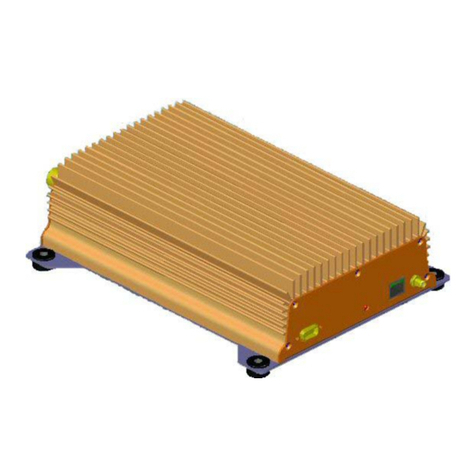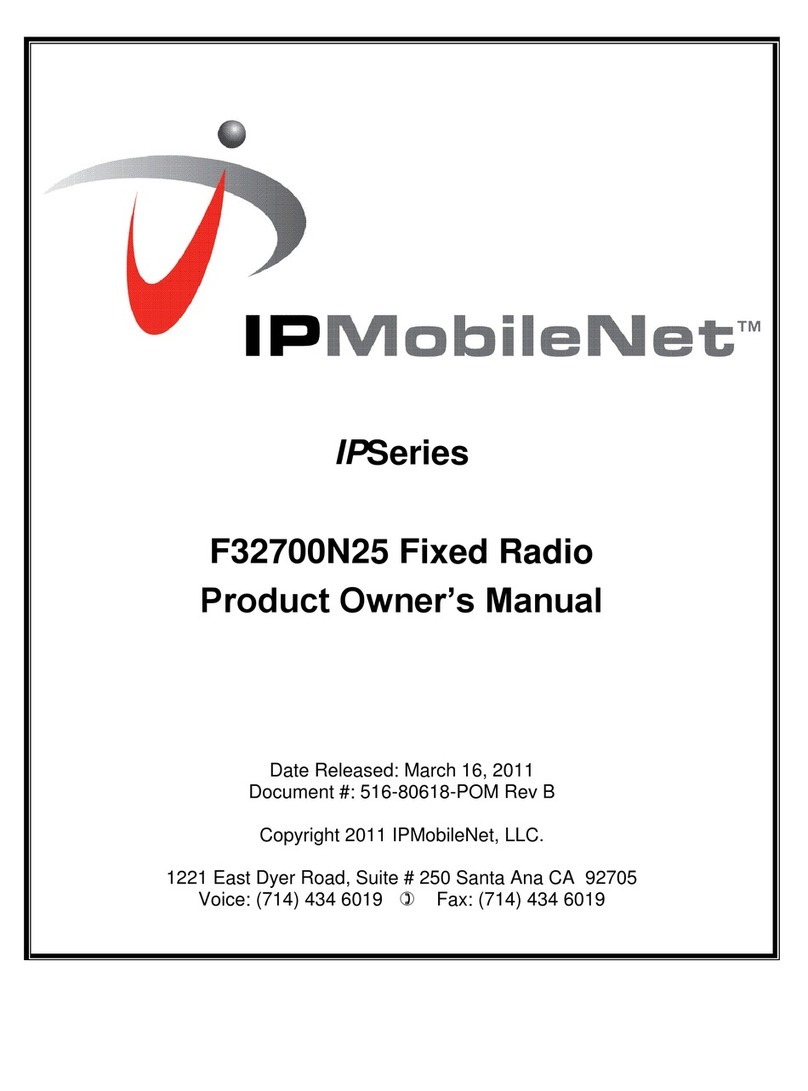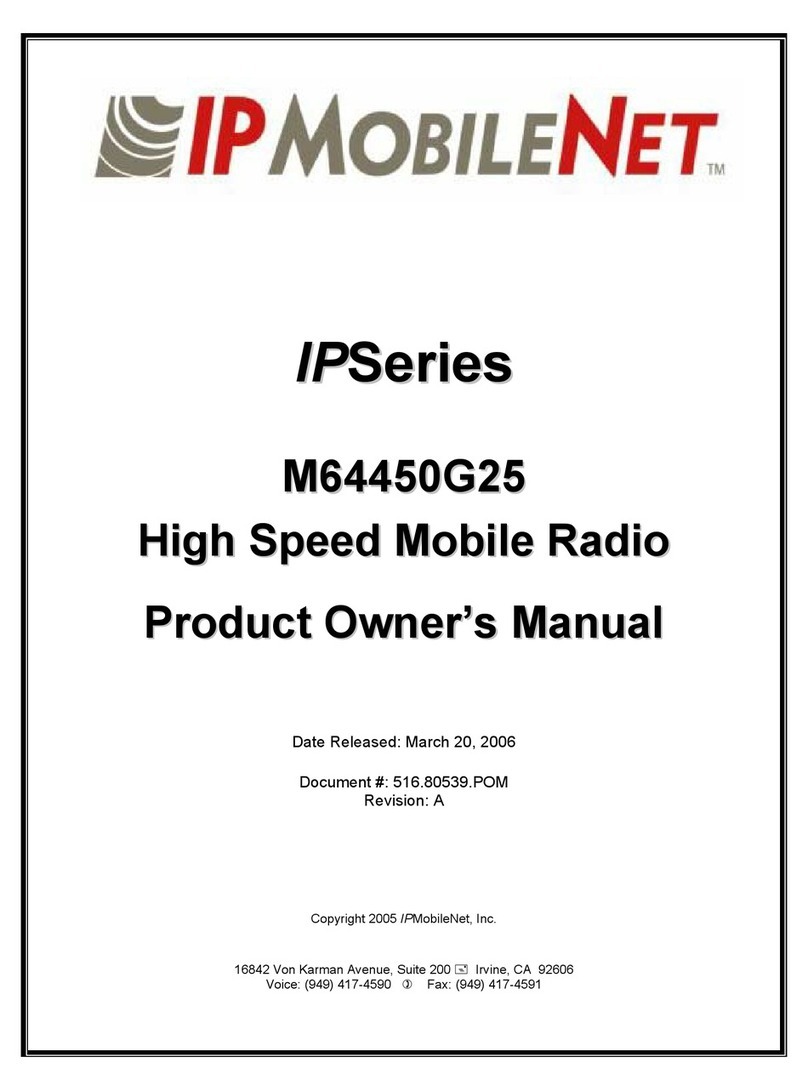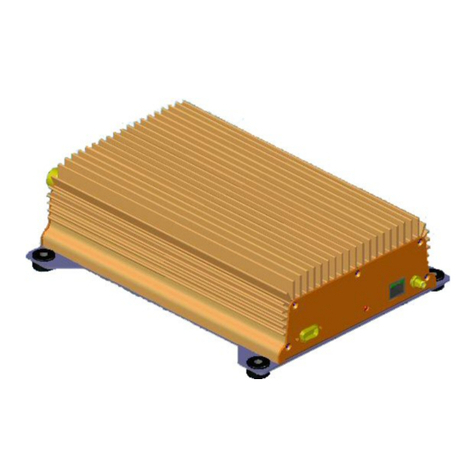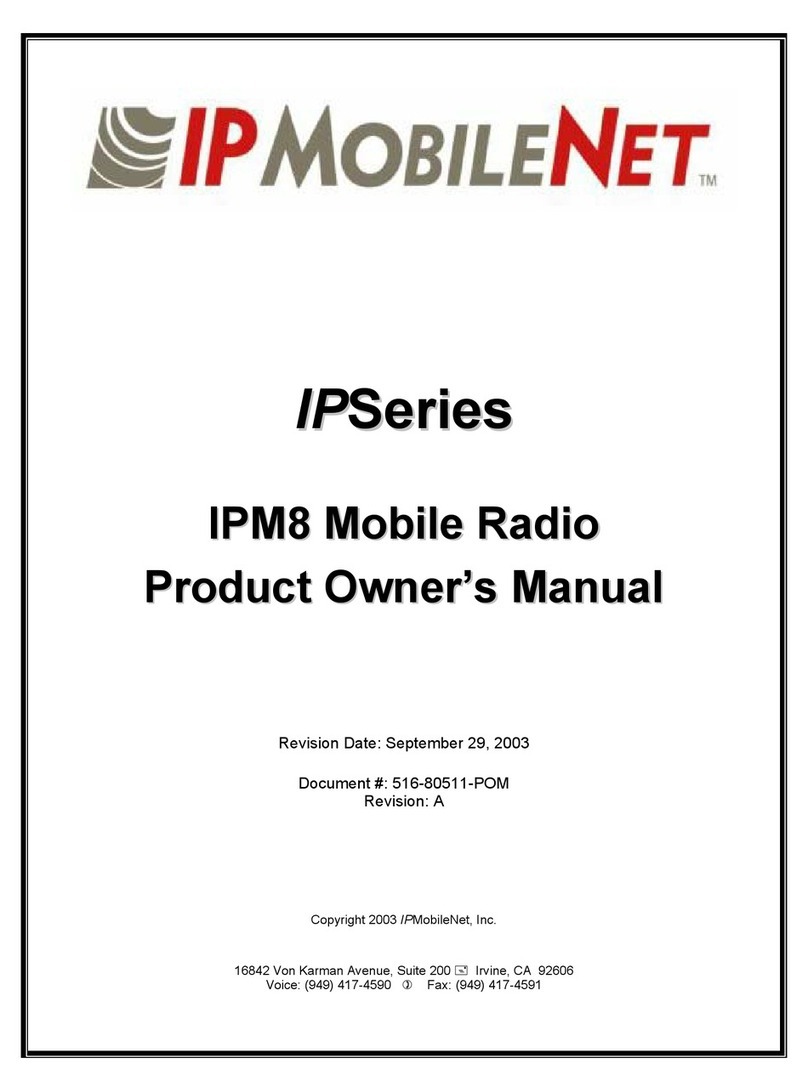
TABLE OF CONTENTS
M64700G25-FCCRpt.doc Page 2
SECTION 1: OVERVIEW..........................................................................................................................3
Product Description....................................................................................................................3
M64700G25 Mobile Radio Section Descriptions......................................................................3
External Features ........................................................................................................................ 4
SECTION 2: SETUP AND CONFIGURATION METHODS .....................................................................5
High Speed Mobile Radio Setup and Configuration Method..................................................5
Mobile Radio-to-Mobile Computer Setup......................................................................... 5
SECTION 3: INSTALLATION INSTRUCITONS ......................................................................................6
Installation Overview ..................................................................................................................6
Installation Instructions..............................................................................................................8
Pre-Installation Guidelines ...............................................................................................8
Mounting the High Speed Mobile Radio ..........................................................................9
Serial Cable Connection and Routing............................................................................10
Ethernet Setup ...............................................................................................................10
Delay Timer Installation .................................................................................................10
Carling Switch Installation (DPST Heavy Duty Toggle).................................................12
Mobile Radio Power Supply Installation.........................................................................13
Antenna Configuration ...................................................................................................14
Measuring Return Loss ...................................................................................15
Measuring Voltage Standing Wave Ratio .......................................................15
Measuring Insertion Loss ................................................................................16
Post Installation Checklist ..............................................................................................16
Mobile Installation Layout Diagrams ......................................................................................17
Preliminary Testing and Troubleshooting..............................................................................19
Checklist of Requirement Materials ...............................................................................19
Base Station Setup for Testing ......................................................................................20
Preliminary Test Procedure and Troubleshooting ................................................................21
Confirming High Speed Mobile Radio Receiver Sensitivity ...........................................24
SECTION 4: FACTORY TEST PROCEDURE .......................................................................................25
Equipment List .........................................................................................................................25
Programming and Configuring Mobile Radio ........................................................................26
Adjustment / Alignment Procedures....................................................................................... 27
Receiver Injection...........................................................................................................27
Receiver1
......................................................................................................................27
Receiver2......................................................................................................................27
TransmitData
.................................................................................................................28
Power Setting.................................................................................................................28
ReceiveData..................................................................................................................29
Final Test .......................................................................................................................29
Uplink Hardware Timing Verification..............................................................................31
Downlink Hardware Timing Verification .........................................................................33
SECTION 5: FCC LABEL.......................................................................................................................35
M64700G25 Data Transceiver FCC Label Placement ............................................................35
M64700G25 Data Transceiver FCC Label ...............................................................................35
APPENDIX A: M64700G25 CIRCUIT BOARD DIAGRAMS .................................................................36
APPENDIX B: M64700G25 TEST DATA SHEET..................................................................................37
